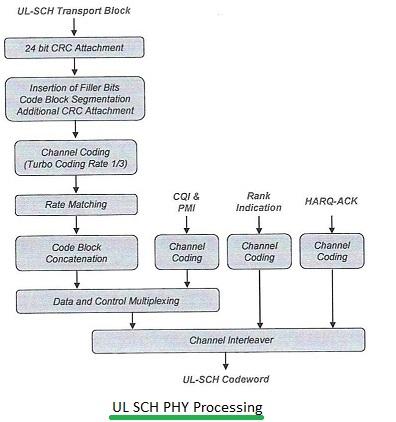LTE UL-SCH Physical Layer Processing
Advertisement
This page describes the basic function of LTE UL-SCH and outlines the UL-SCH physical layer processing for the transmitter part. You’ll also find a reference link to more information about the LTE physical layer.
The UL-SCH (Uplink Shared Channel) is used to transmit RRC signaling and application data. UCI (Uplink Control Information) can be added during physical layer processing before the data is mapped onto the PUSCH (Physical Uplink Shared Channel). Transport Blocks (TBs) belonging to the UL-SCH have variable sizes.

After the UL-SCH data passes through the modules as shown in the figure above, a UL-SCH codeword is produced. This codeword is then modulated and used to generate the SC-FDMA signal. The UL-SCH codeword is transmitted within a 1 ms subframe.
LTE UL-SCH Physical Layer Processing Reference
- 3GPP TS 36.212 LTE Physical Layer
Advertisement
 RF
RF





